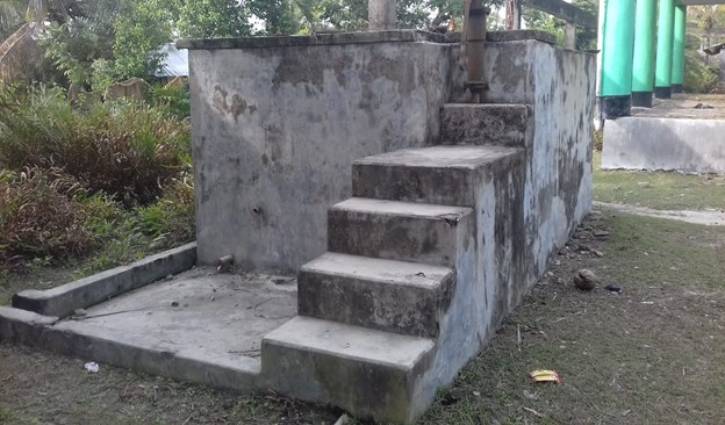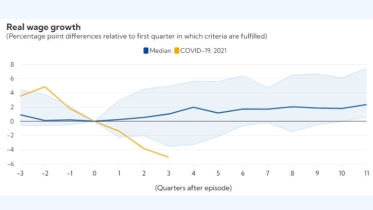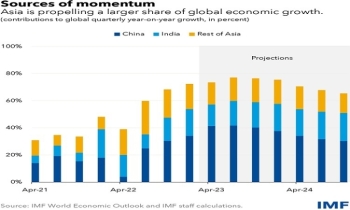Safe drinking water scarcity in coastal Bangladesh
Ashik Rubaiyat || BusinessInsider

Typical pond sand filter in Coastal Area. Photo: Courtesy
Safe drinking water demand is interlinked with the global population. Globally, 785 million people have no access to safe drinking water. In addition, another 2.1 billion people lack safe drinking water at home. We cannot imagine life on earth without water. Water is necessary to improve the environment, food production, health, and economy of a community. In contrast, millions of people are living without safe drinking water on earth causing diarrhoea, cholera, and typhoid. As a result, 1.8 million people die every year due to water-borne diseases in developing countries. Other findings stated that up to 3 million people die every year due to similar causes.
According to the World Health Organization, approximately one fourth of the population has no access to safe drinking water in Bangladesh. Ground water is the principal source for collecting drinking water of Bangladesh. Rural populations are heavily dependent on ground water sources. It is estimated that 73 percent of the rural population use tube wells as a source of drinking water. This is the result of a UNICEF campaign, started in 1970 to promote tube wells in the country. It is estimated that 90% of the rural population used tube wells in the early 1990s.
In Bangladesh, 76 Upazilas of 19 coastal districts are likely to be affected by rise of sea level. Consequently, around 15 million people drink saline water. In addition, millions of people are unable to collect potable water due to the lack of available safe sources in the coastal area. Bangladesh has a long (710 km) coastline in the Bay of Bengal. The coastal regions have seen more natural disasters than other areas. The lives and livelihoods of the population are affected due to water salinity, arsenic, water logging, pollution, risks from climate change, and so on. Fresh water sources like tube wells, ponds, and water bodies are inundated regularly due to the floods or tidal surges. This situation is causing a significant burden to the coastal population as ground and surface water are contaminated regularly.
Extreme difficulties are faced by southwestern coastal regions in accessing safe drinking water. Difficulties are like arsenic contamination, salinity, drought, flooding, and groundwater depletion in the surface and groundwater sources. Freshwater aquifers at suitable depth are not available in the coastal regions. Consequently, salinity and natural arsenic are more available in the ground water and shallow/deep tube wells are not workable in the regions. Normally, people use ponds with pond sand filters (PSF) for their drinking water sources. In addition, those ponds dry up during summer. Nowadays, the longest dry season is observed due to extreme climatic events. It is also observed that many PSF are not functional in the coastal regions and sustainability is a major concern.
freshwater wetlands and groundwater bodies are affected by salinity intrusion. Global warming is the main reason for the rise of sea level. On the contrary, freshwater flow also decreased during the dry season. It is predicted that fresh and moderate water zones will be reduced due to sea level rise. Subsequently, salt water zones will be increased in the region. Salinity intrusion is also increasing due to the decreasing upstream water flow in Ganges River. The main reason for salinity intrusion is sedimentation, cyclones, sea level rise, storm surge, tidal surge, and shrimp farming. Bangladesh suffers from a significant drinking water scarcity due to the impact of climate change. Studies forecast that Bangladesh may face water stress by the year of 2025.
water consumption practices are adopted by local people living in the south western coastal regions. Human health and socio-economic development are important issues for the coastal population while ensuring safe drinking water access. Local communities must be involved in the planning process to achieve sustainable drinking water supply for all. The Department of Public Health Engineering is mainly responsible for drinking water supply but local ownership is important for any successful program.
Women play a central role in the provision, management, and safeguarding of water in the southwestern coastal region of Bangladesh. This role is important where millions of women lack access to water for their basic needs. Covid-19 created socio-economic insecurity among coastal women. The most important natural resources are water and it is important to manage properly due to its scarcity. In the coastal region, water resources require effective attention as the groundwater contains saline and natural arsenic.
The writer is a climate activist. He can be reached at [email protected].
























